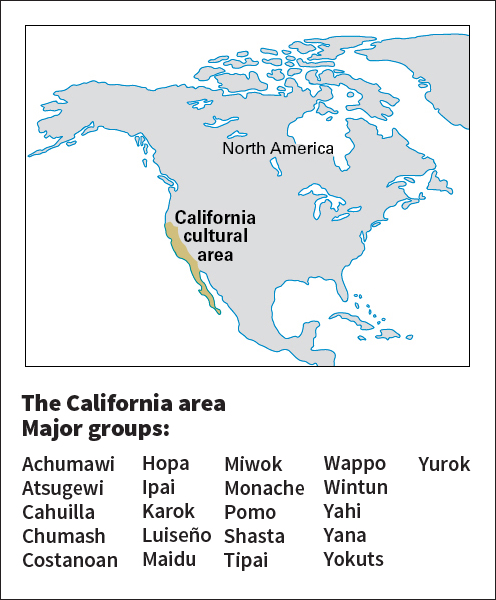Pomo, << POH moh, >> were a group of Native American tribes in northern California. The Pomo originally consisted of 72 small tribes that spoke 7 related languages. Each tribe consisted of from 100 to 2,000 people who lived in extended families. Each extended family was led by a hereditary headman or headwoman. Together, these leaders made up the tribe’s decision-making body. Each tribe occupied one or more villages. Pomo territory included redwood forests along the Pacific coast and grassy foothills around Clear Lake. For food, the Pomo gathered acorns, berries, bulbs, and seaweed; caught fish and shellfish; and hunted deer, elk, rabbits, and sea lions.

In 1750, there were between 10,000 and 20,000 Pomo. But by 1910, the population had declined to 1,200 as a result of disease and enslavement during Mexican control of the region and as a result of massacres by American settlers. Today, about 6,500 Pomo live throughout their traditional homeland on reservations and in Ukiah, Santa Rosa, and other towns and cities. Many Pomo work in law, education, and other professional fields. Pomo traditions are kept alive in religious ceremonies, in the creation of basketry art, and in the practice of traditional Pomo medicine.
